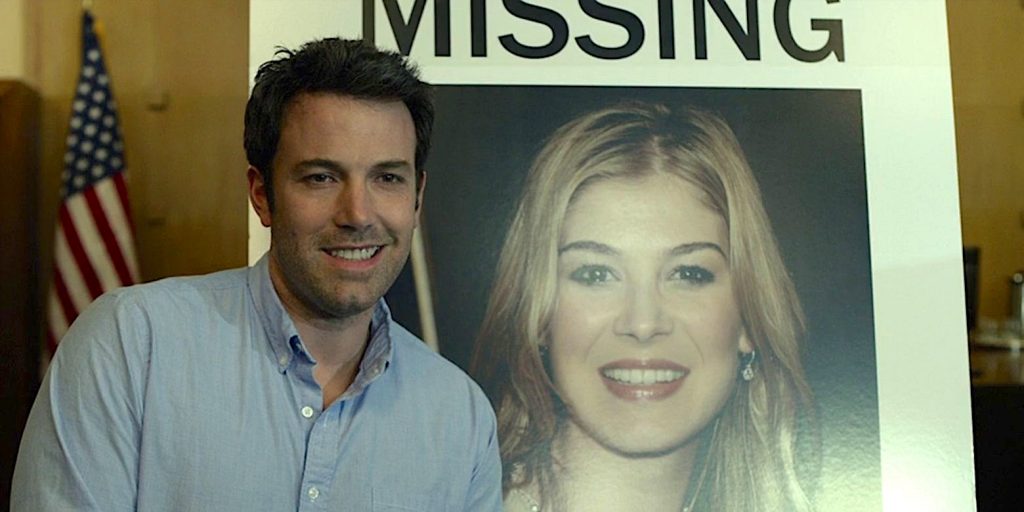The Power of Unreliable Narrators: Crafting Suspense in Film and TV

An unreliable narrator is a powerful storytelling device that can transform a screenplay, adding layers of complexity, uncertainty, and intrigue. By presenting a skewed or biased perspective, these narrators challenge audiences to question the truth of the story being told. They invite a discussion into the very nature of truth. This technique can create suspense, deepen character arcs, and engage viewers.
What Makes a Narrator Unreliable?
An unreliable narrator can be defined as a character whose credibility is compromised. This can occur for various reasons, including personal bias, mental instability, fear, deception, forgetting or misinterpreting facts, or another hidden agenda. Writers should consider how a character’s backstory influence their perception of events. Is the character acting intentionally or not? Are there different sides to their character which only makes them unreliable in certain situations? To be clear, an unreliable narrator isn’t ostensibly lying. They are telling a fractured, colored version of events which may not be entirely accurate.
Establishing Motives
To create an effective unreliable narrator, writers should first establish a clear motive for their unreliability. For example, in Fight Club the unnamed protagonist suffers from dissociative identity disorder, leading him to create an alter ego, Tyler Durden. His mental instability distorts his perception of reality.

Tyler Durden (Brad Pitt) in Fight Club
Subjective Language and Personal Bias
The language and tone used by an unreliable narrator is often subjective, reflecting their personal viewpoint and biases. This can shape how the audience perceives the story. In The Catcher in the Rye, Holden Caulfield’s cynical and judgmental tone colors his narration, leading readers to question his reliability. His disdain for “phoniness” influences how he describes the people around him, creating a skewed and negative view of reality.
Subjective Descriptions
Writers can enhance the unreliability of their narrators by using language that reveals their emotions and biases. For instance, if a character is jealous, their descriptions of others may be tinged with negativity or fake compliments.
Contradictions and Inconsistencies
Allowing the narrator to make contradictory statements or present conflicting information can create doubt and keep the audience engaged. In Gone Girl, the alternating perspectives of Nick and Amy Dunne reveal inconsistencies in their accounts based on their internal conflicts, leading viewers to question the truth of their relationship and the events surrounding Amy’s disappearance.

Nick (Ben Affleck) and Amy Dunne (Rosamund Pike) in Gone Girl
Crafting Contradictory Narratives
Writers can introduce contradictions by having the narrator misremember events or provide conflicting accounts of the same situation. This technique encourages the audience to actively piece together the truth or their perceived truth.
In American Psycho, Patrick Bateman serves as a quintessential unreliable narrator. His charming, yet psychopathic demeanor, leads viewers to question the reality of his actions. Bateman’s narrative is filled with contradictions, as he oscillates between moments of extreme violence and mundane observations about consumer culture. His mental instability and detachment from reality create a chilling atmosphere, forcing the audience to grapple with the ambiguity of his character.
Selective Revelation of Information
An unreliable narrator may strategically withhold or reveal information, manipulating the audience’s understanding of the story. In The Sixth Sense, the twist ending hinges on the selective information provided by Dr. Malcolm Crowe, leading viewers to reevaluate everything they thought they knew. What information is key, how much of it is being withheld, and how is it drip fed to the audience to evoke the maximum emotional impact.

Dr. Malcolm Crowe (Bruce Willis) in The Sixth Sense
Unreliable Perceptions
Exploring how a narrator’s perceptions differ from reality can add depth to their character. In Shutter Island, U.S. Marshal Teddy Daniels believes he is investigating a missing patient, but as the story unfolds, it becomes clear that his perceptions are deeply flawed, leading to a shocking revelation about his true identity.
Creating Distorted Perceptions
Writers can showcase unreliable perceptions through hallucinations, misinterpretations, or selective memory. This not only adds complexity to the character but also raises questions about the nature of reality. Some characters, such as those with amnesia, drift between fact and fantasy and often blur the line between reality and illusion.
Contrasting Perspectives
Introducing other characters who present alternative perspectives can create a rich tapestry of conflicting narratives. In The Girl on the Train, the protagonist Rachel Watson’s unreliable narration is contrasted with the perspectives of Megan and Anna, allowing readers to piece together the truth from multiple angles.

Rachel Watson (Emily Blunt) on The Girl On The Train
Utilizing Supporting Characters
Writers can use supporting characters to challenge the narrator’s version of events, providing a broader context and encouraging the audience to question the reliability of the narrator. This technique not only enriches the narrative but also allows for a more dynamic exploration of truth and perception.
In The Usual Suspects, the character Verbal Kint tells the story of a heist gone wrong, but as the film progresses, the audience learns that his account is riddled with lies. The contrasting perspectives of other characters, along with the eventual reveal of Verbal’s true identity, force viewers to reconsider everything they thought they understood about the plot.
In contrast, consider Sharp Objects, where the characters filter their reality through PTSD.
Foreshadowing, Symbolism & Unreliable Memory
Techniques such as foreshadowing, symbolism, and unreliable memory can blur the line between truth and fiction, leaving audiences intrigued, destabilized, and uncertain.
In Memento, the protagonist Leonard Shelby suffers from short-term memory loss, and the story is told in reverse chronological order. This unique structure forces viewers to experience Leonard’s confusion and disorientation, making them question the reliability of his recollections and the motivations behind his actions.
Leonard subtly hints at his unreliability through early clues that may seem innocuous at first, but gain significance later. Symbols are used to represent the narrator’s internal struggles or distorted perceptions. Writers can explore how memory can be fallible, allowing characters to misremember events or create false narratives.

Leonard Shelby (Guy Pearce) in Memento
Providing Hints and Clues
Dropping subtle hints or clues throughout the story can suggest the narrator’s unreliability, allowing readers to piece together the truth gradually and sort truths from untruths.
In The Others, the protagonist Grace believes she is protecting her children from supernatural forces, but as the story unfolds, viewers receive clues that challenge her perception of reality. The gradual revelation of these hints creates a sense of suspense and culminates in a shocking twist.
Why Writers Use Unreliability
- Heightened Suspense: When the audience suspects half-truths, every scene becomes a guessing game.
- Psychological Depth: Flawed narrators reveal inner conflicts: grotesque and beautiful in vivid detail.
- Thematic Resonance: Themes like identity, guilt, and memory gain weight when filtered through doubt.
- Interactive Viewing: Viewers become active participants, piecing together clues instead of passively consuming.
Balancing Clues and Red Herrings
Too many clues and the twist feels telegraphed and unwieldy; too few and it seems unearned. Aim for a ratio:
- 60% genuine clues
- 40% misdirections disguised as revelations to keep the audience on their toes.
In Gone Girl, we trust Amy’s diary until subtle timeline slips expose her plotting. These early slips are dismissed as her style—until they’re the story’s linchpins.
Deepening Character Through Unreliability
Unreliable narrators often carry emotional scars. When you map their psyche, you discover:
- Childhood traumas that twist memory
- Moral compromises that seek justification
- Desires so intense they override conscience
Take Shutter Island. Teddy Daniels’s grief over his wife’s death radiates through every distorted flashback. His hallucinations aren’t cheap scares—they’re breadcrumbs to his guilt.
The Role of Structure and Editing
In film and TV, editing shapes reliability. Nonlinear cuts, flash-forwards, and split screens can mirror a fractured mind. Christopher Nolan’s Memento unfolds in reverse sequences, forcing the audience to reassemble events moment by moment alongside Leonard Shelby. Here, structure itself becomes part of the unreliable narrator toolkit.
Could a nontraditional structure in your script deepen uncertainty rather than confuse? Here are some questions to ask:
- What truth does your narrator refuse to admit?
- How would another character describe the same incident?
- At what point will the audience realize they’ve been misled?
- How does the audience feel about the deception?
- How does the twist redefine the story’s theme?
- What visual or auditory motif can hint at unreliability in every scene?
Conclusion: The Power of Unreliable Narrators
Unreliable narrators are a fascinating and effective storytelling device that can elevate a narrative by adding complexity, suspense, and intrigue. As you develop your own stories, consider how you can employ these techniques to craft compelling unreliable narrators. Reflect on the questions posed throughout this article to deepen your understanding of character motivations and narrative choices.
Join the Discussion!
Related Articles
Browse our Videos for Sale
[woocommerce_products_carousel_all_in_one template="compact.css" all_items="88" show_only="id" products="" ordering="random" categories="115" tags="" show_title="false" show_description="false" allow_shortcodes="false" show_price="false" show_category="false" show_tags="false" show_add_to_cart_button="false" show_more_button="false" show_more_items_button="false" show_featured_image="true" image_source="thumbnail" image_height="100" image_width="100" items_to_show_mobiles="3" items_to_show_tablets="6" items_to_show="6" slide_by="1" margin="0" loop="true" stop_on_hover="true" auto_play="true" auto_play_timeout="1200" auto_play_speed="1600" nav="false" nav_speed="800" dots="false" dots_speed="800" lazy_load="false" mouse_drag="true" mouse_wheel="true" touch_drag="true" easing="linear" auto_height="true"]










You must be logged in to post a comment Login